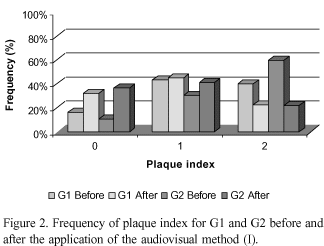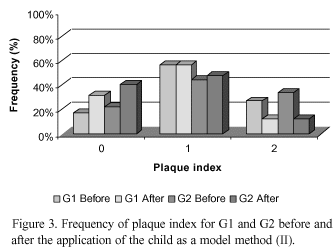Three different methods of instruction and motivation were used to assess the learning process and ability of preschool children in performing toothbrushing. Forty children from a private nursery of Brasília, DF, Brazil, were divided into 2 groups according to age (3-4 years old and 5-6 years old). The following methods of instruction and reinforcement were applied: I - audiovisual; II - child as a model; III - individual instruction. Professional prophylaxis was then performed and the children remained 48 hours without any kind of oral hygiene. Plaque disclosing and plaque index were carried out and recorded. The children subsequently brushed their teeth according to each method of instruction and a new plaque index was recorded. The data were analyzed statistically using the Student t-test and the comparison of two proportions. The results showed that the children of both groups reduced plaque index and that the individual instruction method was superior (p<0.05) to the others at all ages. Children older than 5 years of age were able to learn and accomplish toothbrushing better than younger children.
children; toothbrushing; education; plaque index




